Just a few weeks ago, we were down in sunny Orlando, FL, for
ICAST 2017 where we had the opportunity to check out the latest products from every major manufacturer of fishing products from all across the globe. ICAST, or the International Convention of Allied Sportfishing Trades, is produced by the American Sportfishing Association and is the world’s largest sportfishing tradeshow.
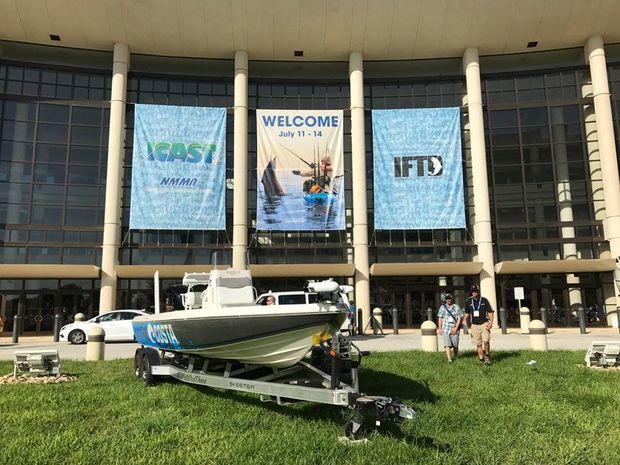
Each year media representatives and wholesale buyers get the chance to vote on their favorite innovative items unveiled in the new product showcase. From a selection of more than 1200 products entered by more than 280 companies, awards were presented in 26 “Best of” categories and one award for overall “Best of Show.” Here are a few of the winners that caught our attention.
BOTE Rover Stand up Paddleboard Boat
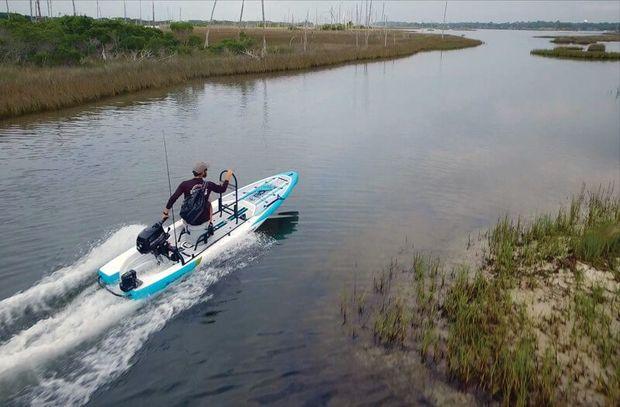
The BOTE Rover, a stand up paddleboard boat, took top honors at this year’s ICAST fishing tackle show,
winning the Best in Show award.
Okay, so you can call it a paddleboard, but this thing really is a boat. It’s 14 feet long, can carry up to 500 pounds, has a maximum horsepower rating of six, breaks a plane to hit speeds up to 16 miles per hour, and has a V-shaped bow as opposed to the usual surfboard-like shape of a paddleboard. Construction is totally high-tech, with a honeycomb-cored epoxy fiberglass structure. The seat is a KULA 5 cooler, which also has rodholders. You can add a Power Pole Micro, a Grab Rack (with two rodholders), a wheel rack, and ConnexSUP plugs to mesh with RAM or Scotty mounting accessories.
Naturally, it’s also heavier than the usual SUP (105 pounds for the board alone, before you start choosing accessories), and doesn’t paddle like one. Then again, with that outboard doing the heavy lifting, most of your paddling will take place once you’ve already arrived at the hotspot.
While noting that having a motorized SUP sort of defeats the entire purpose of having a SUP, from a strictly fishing perspective (as if there were any other), this thing looks pretty dang cool. It’s not cheap, with an MSRP starting at $3500 for the board alone, but many high-end fishing kayaks cost just as much. The bad news is that you can’t even get one just yet; BOTE says the Rover will become available “some time this fall.”
Humminbird Solix 15 Fishfinder Chartplotter
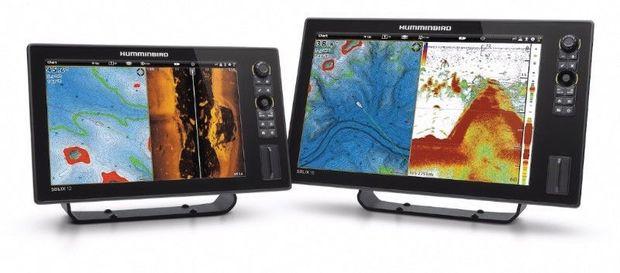
When it comes to the latest and greatest in fishfinders, many get introduced at the ICAST show, where fishing tackle manufacturers show off the models that aren’t even on the market yet. And while walking the show floor, we came across the Humminbird Solix 15.
Why did the Solix catch our eye in the first place?
It won the award for Best New Electronics, 2017 at the show. Though the 15-inch model is the one grabbing headlines, there’s also a 12-inch version available. Autochart Live got a brief mention in the video, but some explanation is in order; this function allows you to create and save structure charts of whatever body of water you’re fishing, using the returns from your sounder and the position data from the GPS (similar to Navionics’ SonarChart Live and Lowrances’ Genesis). This is pretty cool stuff, considering the fact that “regular” digital charts, awesome as they may be, rarely reflect exact details when it comes to drop-offs, wrecks, and reefs. The new Humminbird Solix 15 can be flush-mounted or gimbal-mounted.
The Solix 15 also has a number of perks not found on lesser units: Bluetooth connectivity (text messages and such appear right on your chartplotter screen), down and side imaging at 455 kHz, CHIRP depth finding, both touchscreen and keypad functionality, pinch-to-zoom, and iPilot interfacing are all in the mix. The cost for the units is in line with others of this size and style, MSRP’ing at $2999 for the 15 with CHIRP and $3499 for the 15 with MEGA side-imaging, and $2399 and $2899 for the 12-inch unit. Both are NMEA2000 compatible, offer ethernet networking, include built-in chartography, and put out 1000 watts. According to Humminbird, target separation is down to 2.5-inches.
Shimano Sustain and Curado K Fishing Reels
Last year, one of our favorite new items introduced at the ICAST fishing tackle show was the Shimano Stradic C3000. At the 2017 ICAST show, would they top it? Naturally, we were interested to see what this industry giant would be introducing. And we weren’t disappointed, when we spotted the Shimano Sustain spinning reel and the Curado K baitcasting reel.
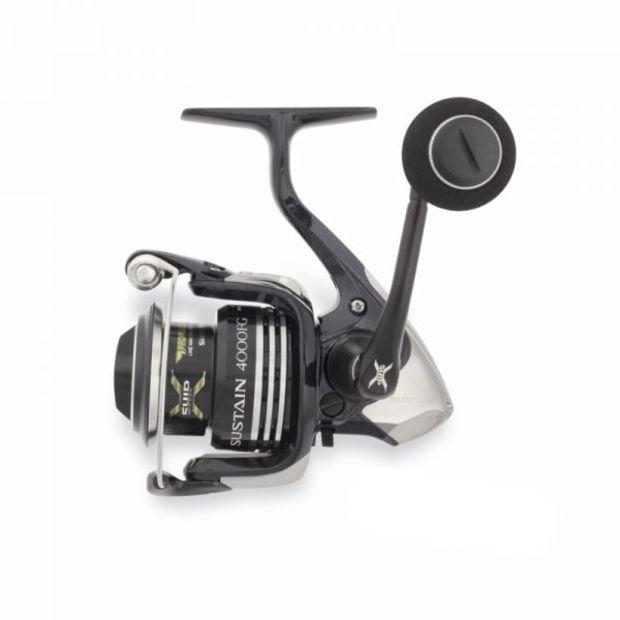
The Sustain seems quite similar to that Stradic C3000 we loved so much, though the body does seem more rigid and we’re guessing that as a result, it’ll hold up for the long haul. By the way, the Sustain won the award for Best Saltwater Fishing Reel introduced at the show. We handled it, we liked it just as much as the Stradic, and if there’s anything we’ll whine about it will be the slightly steeper $300-plus (depending on size) price tag. Hey, you get what you pay for.
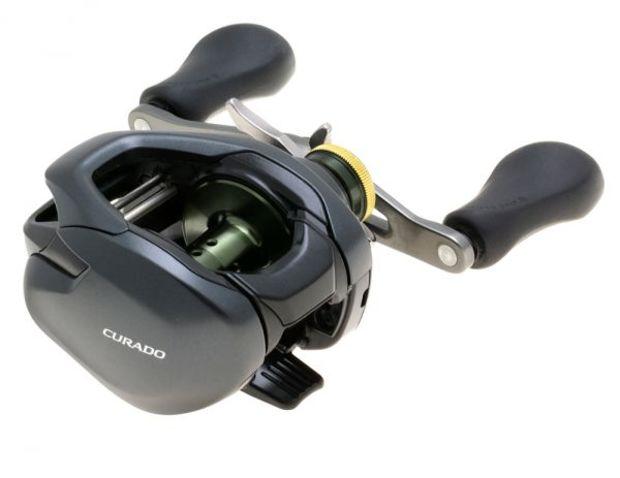
Shimano Curado baitcasting reels, on the other hand, have been around for years. But now they’ve made them lighter, smaller (by about 10 percent), and smoother. This is a serious upgrade to the series, but just as importantly, the spool’s line capacity remains the same (230 yards of 30-pound braid or 180 yards of eight-pound monofilament). Handle length has been increased to 45 mm to add leverage, and “MicroModule” gears are what Shimano uses to improve smoothness.
The brake system has also been improved, with adjustable internal brakes and a wide-adjustment external dial.
The Curado K won the award for Best Freshwater Reel, but we’re going to argue that point. Plenty of anglers use these reels in the briny waters of the Chesapeake and truth be told, they perform exceptionally well. (Shimano does say that they’re suitable for inshore use, too.) We’re not about to suggest you eBay all your old Curados and upgrade, but… well, you know.
Berkley FireLine Ultra 8 Braided Fishing Line
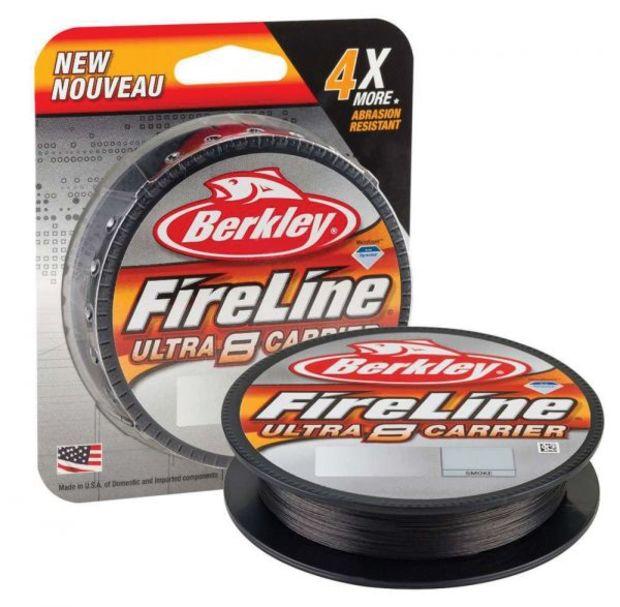
If you remember when Berkley FireLine first hit the market, you’ll probably recall it was one of the first braids to popularize this type of line for use with tactics such as light-tackle jigging in the Chesapeake, light-tackle trolling, and speed jigging. The thin diameter, zero-stretch properties, and slick character of this line made it ideal for all of the above. Now Berkley has a new version of FireLine to consider: Ultra 8.
Braid’s one real weakness when compared to monofilament is a lack of abrasion resistance. We’ve compared braid to mono head-to-head in this regard. By stroking a number of brands of braid and monofilament against the rusty tines of an old grappling anchor and then scale-testing breaking strength, we found that braid had around 10 percent less resistance than mono in low-diameter tests (up to 20-pound). In high-diameter tests this difference became even greater, with 80-pound mono resisting abrasion better to the tune of 40 or even 50 percent. So, this is a huge factor to consider, especially for anglers who often fish around rough, ragged structure such as wrecks, reefs, or bridge pilings.
Just how big a difference in abrasion resistance will the fusing process Berkley applies make? You heard the claim of four times better resistance, several times in the video. We can’t vouch for that until we try it ourselves, and on Berkley’s website, they claim “50 percent greater” abrasion resistance. (Does that mean four times as much? We’re not mathematicians, but...)
And, we can share a few other details. The line does have a slick, smooth feel, and it does fly more smoothly through the guides than some other braids. You still need to use a Palomar and never a fisherman’s knot with this stuff. The pricing is still pretty steep as compared to monofilament, coming in at around $20 for a 125-yard spool, $40 for 300 yards, and $199 for a bulk spool of 1500 yards. Line of four to 30 pound test is due to come available in early September.
 Each year media representatives and wholesale buyers get the chance to vote on their favorite innovative items unveiled in the new product showcase. From a selection of more than 1200 products entered by more than 280 companies, awards were presented in 26 “Best of” categories and one award for overall “Best of Show.” Here are a few of the winners that caught our attention.
Each year media representatives and wholesale buyers get the chance to vote on their favorite innovative items unveiled in the new product showcase. From a selection of more than 1200 products entered by more than 280 companies, awards were presented in 26 “Best of” categories and one award for overall “Best of Show.” Here are a few of the winners that caught our attention.
 The BOTE Rover, a stand up paddleboard boat, took top honors at this year’s ICAST fishing tackle show, winning the Best in Show award.
Okay, so you can call it a paddleboard, but this thing really is a boat. It’s 14 feet long, can carry up to 500 pounds, has a maximum horsepower rating of six, breaks a plane to hit speeds up to 16 miles per hour, and has a V-shaped bow as opposed to the usual surfboard-like shape of a paddleboard. Construction is totally high-tech, with a honeycomb-cored epoxy fiberglass structure. The seat is a KULA 5 cooler, which also has rodholders. You can add a Power Pole Micro, a Grab Rack (with two rodholders), a wheel rack, and ConnexSUP plugs to mesh with RAM or Scotty mounting accessories.
Naturally, it’s also heavier than the usual SUP (105 pounds for the board alone, before you start choosing accessories), and doesn’t paddle like one. Then again, with that outboard doing the heavy lifting, most of your paddling will take place once you’ve already arrived at the hotspot.
While noting that having a motorized SUP sort of defeats the entire purpose of having a SUP, from a strictly fishing perspective (as if there were any other), this thing looks pretty dang cool. It’s not cheap, with an MSRP starting at $3500 for the board alone, but many high-end fishing kayaks cost just as much. The bad news is that you can’t even get one just yet; BOTE says the Rover will become available “some time this fall.”
The BOTE Rover, a stand up paddleboard boat, took top honors at this year’s ICAST fishing tackle show, winning the Best in Show award.
Okay, so you can call it a paddleboard, but this thing really is a boat. It’s 14 feet long, can carry up to 500 pounds, has a maximum horsepower rating of six, breaks a plane to hit speeds up to 16 miles per hour, and has a V-shaped bow as opposed to the usual surfboard-like shape of a paddleboard. Construction is totally high-tech, with a honeycomb-cored epoxy fiberglass structure. The seat is a KULA 5 cooler, which also has rodholders. You can add a Power Pole Micro, a Grab Rack (with two rodholders), a wheel rack, and ConnexSUP plugs to mesh with RAM or Scotty mounting accessories.
Naturally, it’s also heavier than the usual SUP (105 pounds for the board alone, before you start choosing accessories), and doesn’t paddle like one. Then again, with that outboard doing the heavy lifting, most of your paddling will take place once you’ve already arrived at the hotspot.
While noting that having a motorized SUP sort of defeats the entire purpose of having a SUP, from a strictly fishing perspective (as if there were any other), this thing looks pretty dang cool. It’s not cheap, with an MSRP starting at $3500 for the board alone, but many high-end fishing kayaks cost just as much. The bad news is that you can’t even get one just yet; BOTE says the Rover will become available “some time this fall.”
 When it comes to the latest and greatest in fishfinders, many get introduced at the ICAST show, where fishing tackle manufacturers show off the models that aren’t even on the market yet. And while walking the show floor, we came across the Humminbird Solix 15.
Why did the Solix catch our eye in the first place? It won the award for Best New Electronics, 2017 at the show. Though the 15-inch model is the one grabbing headlines, there’s also a 12-inch version available. Autochart Live got a brief mention in the video, but some explanation is in order; this function allows you to create and save structure charts of whatever body of water you’re fishing, using the returns from your sounder and the position data from the GPS (similar to Navionics’ SonarChart Live and Lowrances’ Genesis). This is pretty cool stuff, considering the fact that “regular” digital charts, awesome as they may be, rarely reflect exact details when it comes to drop-offs, wrecks, and reefs. The new Humminbird Solix 15 can be flush-mounted or gimbal-mounted.
The Solix 15 also has a number of perks not found on lesser units: Bluetooth connectivity (text messages and such appear right on your chartplotter screen), down and side imaging at 455 kHz, CHIRP depth finding, both touchscreen and keypad functionality, pinch-to-zoom, and iPilot interfacing are all in the mix. The cost for the units is in line with others of this size and style, MSRP’ing at $2999 for the 15 with CHIRP and $3499 for the 15 with MEGA side-imaging, and $2399 and $2899 for the 12-inch unit. Both are NMEA2000 compatible, offer ethernet networking, include built-in chartography, and put out 1000 watts. According to Humminbird, target separation is down to 2.5-inches.
When it comes to the latest and greatest in fishfinders, many get introduced at the ICAST show, where fishing tackle manufacturers show off the models that aren’t even on the market yet. And while walking the show floor, we came across the Humminbird Solix 15.
Why did the Solix catch our eye in the first place? It won the award for Best New Electronics, 2017 at the show. Though the 15-inch model is the one grabbing headlines, there’s also a 12-inch version available. Autochart Live got a brief mention in the video, but some explanation is in order; this function allows you to create and save structure charts of whatever body of water you’re fishing, using the returns from your sounder and the position data from the GPS (similar to Navionics’ SonarChart Live and Lowrances’ Genesis). This is pretty cool stuff, considering the fact that “regular” digital charts, awesome as they may be, rarely reflect exact details when it comes to drop-offs, wrecks, and reefs. The new Humminbird Solix 15 can be flush-mounted or gimbal-mounted.
The Solix 15 also has a number of perks not found on lesser units: Bluetooth connectivity (text messages and such appear right on your chartplotter screen), down and side imaging at 455 kHz, CHIRP depth finding, both touchscreen and keypad functionality, pinch-to-zoom, and iPilot interfacing are all in the mix. The cost for the units is in line with others of this size and style, MSRP’ing at $2999 for the 15 with CHIRP and $3499 for the 15 with MEGA side-imaging, and $2399 and $2899 for the 12-inch unit. Both are NMEA2000 compatible, offer ethernet networking, include built-in chartography, and put out 1000 watts. According to Humminbird, target separation is down to 2.5-inches.
 The Sustain seems quite similar to that Stradic C3000 we loved so much, though the body does seem more rigid and we’re guessing that as a result, it’ll hold up for the long haul. By the way, the Sustain won the award for Best Saltwater Fishing Reel introduced at the show. We handled it, we liked it just as much as the Stradic, and if there’s anything we’ll whine about it will be the slightly steeper $300-plus (depending on size) price tag. Hey, you get what you pay for.
The Sustain seems quite similar to that Stradic C3000 we loved so much, though the body does seem more rigid and we’re guessing that as a result, it’ll hold up for the long haul. By the way, the Sustain won the award for Best Saltwater Fishing Reel introduced at the show. We handled it, we liked it just as much as the Stradic, and if there’s anything we’ll whine about it will be the slightly steeper $300-plus (depending on size) price tag. Hey, you get what you pay for.
 Shimano Curado baitcasting reels, on the other hand, have been around for years. But now they’ve made them lighter, smaller (by about 10 percent), and smoother. This is a serious upgrade to the series, but just as importantly, the spool’s line capacity remains the same (230 yards of 30-pound braid or 180 yards of eight-pound monofilament). Handle length has been increased to 45 mm to add leverage, and “MicroModule” gears are what Shimano uses to improve smoothness.
The brake system has also been improved, with adjustable internal brakes and a wide-adjustment external dial. The Curado K won the award for Best Freshwater Reel, but we’re going to argue that point. Plenty of anglers use these reels in the briny waters of the Chesapeake and truth be told, they perform exceptionally well. (Shimano does say that they’re suitable for inshore use, too.) We’re not about to suggest you eBay all your old Curados and upgrade, but… well, you know.
Shimano Curado baitcasting reels, on the other hand, have been around for years. But now they’ve made them lighter, smaller (by about 10 percent), and smoother. This is a serious upgrade to the series, but just as importantly, the spool’s line capacity remains the same (230 yards of 30-pound braid or 180 yards of eight-pound monofilament). Handle length has been increased to 45 mm to add leverage, and “MicroModule” gears are what Shimano uses to improve smoothness.
The brake system has also been improved, with adjustable internal brakes and a wide-adjustment external dial. The Curado K won the award for Best Freshwater Reel, but we’re going to argue that point. Plenty of anglers use these reels in the briny waters of the Chesapeake and truth be told, they perform exceptionally well. (Shimano does say that they’re suitable for inshore use, too.) We’re not about to suggest you eBay all your old Curados and upgrade, but… well, you know.
 If you remember when Berkley FireLine first hit the market, you’ll probably recall it was one of the first braids to popularize this type of line for use with tactics such as light-tackle jigging in the Chesapeake, light-tackle trolling, and speed jigging. The thin diameter, zero-stretch properties, and slick character of this line made it ideal for all of the above. Now Berkley has a new version of FireLine to consider: Ultra 8.
Braid’s one real weakness when compared to monofilament is a lack of abrasion resistance. We’ve compared braid to mono head-to-head in this regard. By stroking a number of brands of braid and monofilament against the rusty tines of an old grappling anchor and then scale-testing breaking strength, we found that braid had around 10 percent less resistance than mono in low-diameter tests (up to 20-pound). In high-diameter tests this difference became even greater, with 80-pound mono resisting abrasion better to the tune of 40 or even 50 percent. So, this is a huge factor to consider, especially for anglers who often fish around rough, ragged structure such as wrecks, reefs, or bridge pilings.
Just how big a difference in abrasion resistance will the fusing process Berkley applies make? You heard the claim of four times better resistance, several times in the video. We can’t vouch for that until we try it ourselves, and on Berkley’s website, they claim “50 percent greater” abrasion resistance. (Does that mean four times as much? We’re not mathematicians, but...)
And, we can share a few other details. The line does have a slick, smooth feel, and it does fly more smoothly through the guides than some other braids. You still need to use a Palomar and never a fisherman’s knot with this stuff. The pricing is still pretty steep as compared to monofilament, coming in at around $20 for a 125-yard spool, $40 for 300 yards, and $199 for a bulk spool of 1500 yards. Line of four to 30 pound test is due to come available in early September.
If you remember when Berkley FireLine first hit the market, you’ll probably recall it was one of the first braids to popularize this type of line for use with tactics such as light-tackle jigging in the Chesapeake, light-tackle trolling, and speed jigging. The thin diameter, zero-stretch properties, and slick character of this line made it ideal for all of the above. Now Berkley has a new version of FireLine to consider: Ultra 8.
Braid’s one real weakness when compared to monofilament is a lack of abrasion resistance. We’ve compared braid to mono head-to-head in this regard. By stroking a number of brands of braid and monofilament against the rusty tines of an old grappling anchor and then scale-testing breaking strength, we found that braid had around 10 percent less resistance than mono in low-diameter tests (up to 20-pound). In high-diameter tests this difference became even greater, with 80-pound mono resisting abrasion better to the tune of 40 or even 50 percent. So, this is a huge factor to consider, especially for anglers who often fish around rough, ragged structure such as wrecks, reefs, or bridge pilings.
Just how big a difference in abrasion resistance will the fusing process Berkley applies make? You heard the claim of four times better resistance, several times in the video. We can’t vouch for that until we try it ourselves, and on Berkley’s website, they claim “50 percent greater” abrasion resistance. (Does that mean four times as much? We’re not mathematicians, but...)
And, we can share a few other details. The line does have a slick, smooth feel, and it does fly more smoothly through the guides than some other braids. You still need to use a Palomar and never a fisherman’s knot with this stuff. The pricing is still pretty steep as compared to monofilament, coming in at around $20 for a 125-yard spool, $40 for 300 yards, and $199 for a bulk spool of 1500 yards. Line of four to 30 pound test is due to come available in early September.